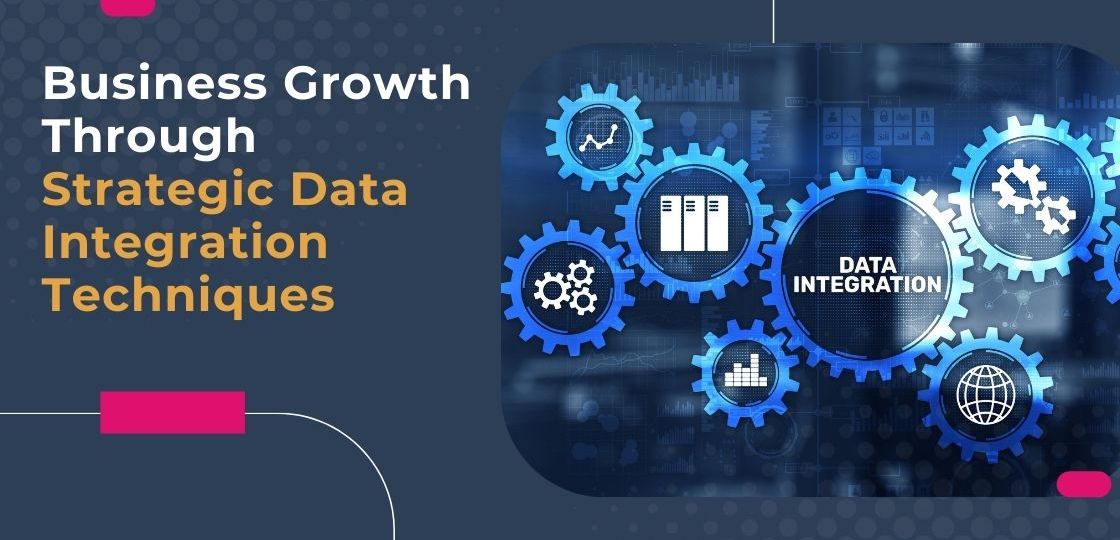
Data and the algorithms used to process it and extract the most value are the foundation of modern business. The typical ‘digitally’ enabled 21C business now integrates a host of apps, services and systems to collect, collate, analyze, store, format and disseminate repurposed data.
Data integration unifies information from many systems, including legacy systems, to provide a comprehensive holistic overview of all the information passing through a company and to provide a plethora of insightful business opportunities in both administering the business as well as innovating.
Most effective Data Integration Techniques & Strategies to know about
Select cutting-edge data integration strategies that effectively meet your specific business objectives. This is when your company needs to process data from all internal and external sources. Which data integration techniques to deploy?
Bespoke Data Integration
This approach allows you to create customised bespoke and hand-coded data solutions for organizing and integrating siloed data. This method is a great substitute for companies that only ever need to copy data from apps to a target source and only need to combine data from a few source systems.
This method’s drawback is that it requires human intervention. Additionally, this method may become difficult to scale up and include other data sources in the future.
Cloud-Based Integration
Cloud computing has changed how companies see and handle their data. In addition to being scalable and affordable, cloud solutions significantly increase data quality and real-time data integration, according to case studies from Microsoft and Amazon and numerous industry consultancies.
Integration Platform as a Service (iPaaS)
In terms of integration, iPaaS is a revolutionary step. Within a SaaS framework, it provides enterprises with a uniform platform to manage data integration trends, automate business processes and link potentially 100s of apps. This platform-oriented strategy, supported by strong APIs, is revolutionizing how companies plan their data management projects for business growth and innovation.
ELT (Extract, Load, and Transform)
The data is loaded instantly and converted within the destination system—usually a cloud-based data lake or data warehouse—in the recent ELT pipeline. Because it loads faster, this method is better suited for huge datasets where timeliness is crucial.
ELT runs on a change data capture (CDC) timescale or a micro-batch schedule. A micro-batch, known as a “delta load,” loads only the updated data from the last successful load. The CDC continuously loads data from the source as soon as it updates.
Data Virtualization

With this data integration technique, you view data from several sources as a single entity point without being physically moved. Rather, there is no requirement for data loading or storage because data is retrieved and analyzed instantly.
Data virtualization has several advantages. One is that it can shorten the time required for data integration and access, which is perfect for businesses with dynamic data management requirements.
Hybrid Integration Platforms
Cloud services and on-premises systems are connected via hybrid platforms. Businesses have to confront difficulties with data security and ensuring smooth platform workflows even if they provide the best of both worlds. Businesses are likely to utilize this option as a transitional phase to a full Cloud solution.
Data Replication
A data integration technique called data replication entails duplicating and preserving data across several systems or locations. Its main goals are ensuring data availability, enhancing fault tolerance, and supporting diverse data-related tasks, including analytics, reporting and disaster recovery.
Data replication involves the real-time or almost real-time mirroring or duplication of modifications made to data from one source system in one or more target systems. This strategy is quite helpful in distributed databases or large-scale web applications where data consistency and high availability are essential.
API Integration
API Integration is a data integration method that facilitates smooth data sharing and communication between various software systems or applications. APIs are essential to contemporary software development and data integration because they act as middlemen between two systems, enabling one to request and access particular functionality or data from the other.
Choosing The Right Strategy
When selecting a data integration approach, you should also consider the following factors:
- To ensure that your data governance approach aligns with your business objectives, you need first to assess the data quality and determine how you want to analyze it.
- Choose the Correct Cloud Service Provider: In light of the abundance of platforms and service providers available, it is sensible to assess which option best suits your present and future business requirements to make the best decision.
- Select a Knowledgeable Technology Friend: If employing a data integration company is something you’re thinking about, make sure the companies have the depth and breadth of capabilities needed to provide a full range of services.
- Set Up Which Systems to Update First: Although it’s a good idea to update all of your systems, doing so can be expensive. As a result, choose which systems must be updated immediately and which ones can be given a different priority depending on how vital they are to your business.
- Consider transitory and migratory options where staged developments on one or more integration techniques are used to facilitate an end integration objective.
Conclusion
Organizations can combine their diverse data with the use of one or more data integration strategies. While some tactics can be utilized independently, others can be combined to meet particular business objectives because they are not mutually exclusive.
Data integration will become more automated, adaptable and efficient in the future. Organizations may maximize the potential of their data for expansion and prosperity by using data integration solutions that give a comprehensive perspective of their data, facilitate prompt decision-making and save costs.
